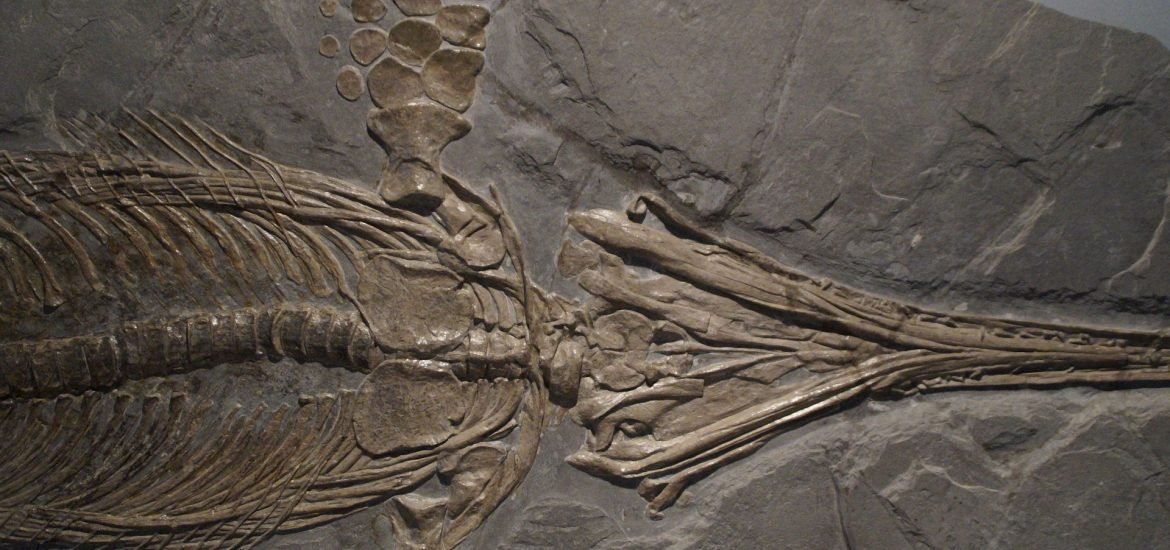
A jawbone fossil found on a beach in Somerset, England, belonged to a massive marine reptile known as a giant ichthyosaur. Scientists say it is one of the largest animals ever and that the findings suggest other isolated bones found in the UK may also have belonged to huge prehistoric creatures.
The one-metre-long jawbone was found at Lilstock on the UK’s Somerset coast in May 2016. Scientists estimate the animal it belonged to was up to 26 metres long and lived around 205 million years ago at the end of the Triassic Period.
The discovery was reported on Monday in the journal PLOS One. After finding the bone, study co-author and fossil collector Paul de la Salle contacted ichthyosaur experts Dean Lomax of the University of Manchester and Professor Judy Massare of SUNY College at Brockport in New York State.
Lomax and Massare determined the fossil to be an incomplete bone from the jaw of a giant ichthyosaur and compared the fossil to several other specimens, including the largest known ichthyosaur, Shonisaurus sikanniensis.
S. sikanniensis was discovered in British Columbia, Canada, and was 21 metres long. Researchers found that the Lilstock fossil was 25% larger than the same bone on S. sikanniensis.
“As the specimen is represented only by a large piece of jaw, it is difficult to provide a size estimate,” Lomax cautioned. “Other comparisons suggest the Lilstock ichthyosaur was at least 20-25 metres.”
Lomax added that although the estimates “are not entirely realistic because of differences between species,” scaling is a common estimate of size “especially when comparative material is scarce.”
The bone’s size has led researchers to believe this particular ichthyosaur was larger than any previously known.
“This bone belonged to a giant,” Lomax told Reuters. “The entire carcass was probably very similar to a whale fall in which a dead whale drops to the bottom of the sea floor, where an entire ecosystem of animals feeds on the carcass for a very long time. After that, bones become separated, and we suspect that’s what happened to our isolated bone.”
The findings have led scientists reinterpret a collection of isolated bones discovered as early as 1850, near a village in Gloucestershire, England, called Aust. The bone fragments were previously thought to belong to terrestrial dinosaurs, but the new jawbone discovery led scientists to determine these fossils also belonged to giant ichthyosaurs.
“We compared it with these Aust bones, and as soon as I saw it in person, my jaw just hit the floor,” Lomax told National Geographic. “I realised this was a giant ichthyosaur and the biggest thing ever found in the UK.”
Giant ichthyosaurs lived between 250 million years ago to 90 million years ago. The animals were larger than other gigantic marine reptiles that roamed ancient oceans during the dinosaur age. Measuring up to 30 metres, today’s baleen whales are the only known marine animals that are bigger.
The findings suggest Earth’s oceans may once have been home to animals as large as or even larger than those that inhabit marine environments today.
“We were mind blown to think that a sea creature the size of a blue whale was swimming off the English coast about 200 million years ago,” Lomax told the BBC. “Every fossil tells a story. It shows there are these things out there – hopefully someone’s going to find a whole one.”